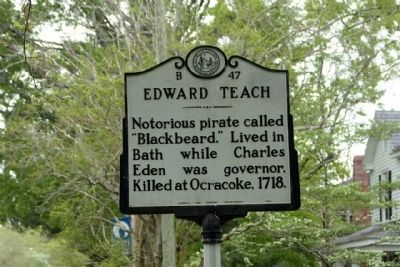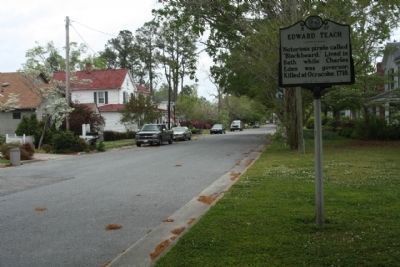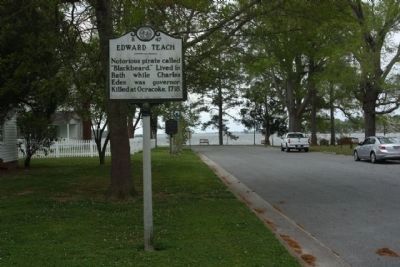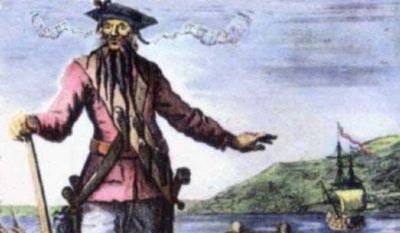Bath in Beaufort County, North Carolina — The American South (South Atlantic)
Edward Teach
Erected 1968 by Archives and Highway Departments. (Marker Number B-47.)
Topics and series. This historical marker is listed in these topic lists: Colonial Era • Settlements & Settlers • Waterways & Vessels. In addition, it is included in the North Carolina Division of Archives and History series list. A significant historical year for this entry is 1718.
Location. 35° 28.325′ N, 76° 48.865′ W. Marker is in Bath, North Carolina, in Beaufort County. Marker is on South Main Street near Front Street, on the left when traveling south. Touch for map. Marker is in this post office area: Bath NC 27808, United States of America. Touch for directions.
Other nearby markers. At least 8 other markers are within walking distance of this marker. John Lawson (within shouting distance of this marker); Bath African Methodist Episcopal Zion Church (about 700 feet away, measured in a direct line); John F. Tompkins (about 700 feet away); Alexander Stewart (approx. 0.2 miles away); John Garzia (approx. 0.2 miles away); St. Thomas Church (approx. 0.2 miles away); First Post Road (approx. ¼ mile away); First Public Library (approx. 0.3 miles away). Touch for a list and map of all markers in Bath.
Regarding Edward Teach. The “Golden Age of Piracy” flourished, if only briefly, along the North Carolina coast in the early eighteenth century. Foremost among the pirates was Edward Teach (also spelled Thatch), aka “Blackbeard.” A figure of boundless interest to beachgoers, maritime historians, and other audiences worldwide, Teach led a life that remains, in many ways, shrouded in mystery. Teach lived briefly in the town of Bath during the summer of 1718 at which time he received a pardon from Governor Charles Eden pursuant to a royal proclamation intended to suppress piracy.
Teach is reported to have served as a privateer during Queen Anne's War (1701 - 1714) and turned to
piracy sometime after the war. By the fall of 1717 Blackbeard was operating off Delaware and Chesapeake bays in conjunction with two other pirate captains, Benjamin Hornigold and Stede Bonnet. Late in the fall of 1717, the pirates made their way to the eastern Caribbean. It was there, off the island of Martinique, that Blackbeard and his fellow pirates captured the French slaveship La Concorde.
The 200-ton ship was armed with sixteen cannon and had a crew of seventy-five. On July 8, La Concorde arrived in present-day Benin. There the French crew took on a cargo of 516 captive Africans. The captain and officers also obtained about twenty pounds of gold dust for their own account. La Concorde took nearly eight weeks
to cross the Atlantic and the hardships of the notorious Middle Passage took their toll on both the Africans and the French crew. By the time they reached the New World, sixty-one slaves and sixteen crewmen had perished. After crossing the Atlantic, the French ship encountered Blackbeard and his company and surrendered the ship.
The pirates took La Concorde to the Grenadines where the French crew and the enslaved Africans were put ashore. While the pirates searched La Concorde, the French cabin boy informed them of the gold dust that was aboard. The pirates seized the gold. The cabin boy and three of his fellow French crewmen voluntarily joined the pirates, and ten others were taken by force. Blackbeard with his new ship, renamed Queen Anne's Revenge, cruised the Caribbean taking prizes and adding to his fleet. In the Bay of Honduras Blackbeard captured the sloop Adventure. In May 1718, the pirates arrived off Charleston, South Carolina, with Queen Anne's Revenge and three smaller sloops. In perhaps the most brazen act of his piratical career, Blackbeard blockaded the port of Charleston for nearly a week.
Soon after leaving Charleston, Blackbeard's fleet attempted to enter Old Topsail Inlet in North Carolina, now known as Beaufort Inlet. During that attempt, Queen Anne's Revenge was
grounded on the ocean bar and was abandoned. Blackbeard's piratical career ended six months later at Ocracoke Inlet. There he encountered an armed contingent sent by Virginia Governor Alexander
Spotswood and led by Lieutenant Robert Maynard. In a desperate battle aboard Maynard's sloop,Blackbeard and a number of his fellow pirates were killed. Maynard returned to Virginia with the surviving pirates and the grim trophy of Blackbeard's severed head. (North Carolina Office of Archives & History — Department of Cultural Resources)
Also see . . . Blackbeard. a notorious English pirate who operated around the West Indies and the eastern coast of the American colonies. (Submitted on April 28, 2013, by Mike Stroud of Bluffton, South Carolina.)
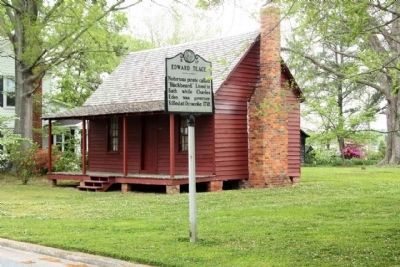
Photographed By Mike Stroud, April 19, 2013
4. Edward Teach Marker
Although Governor Eden sat over one of the most important gubernatorial terms in the state’s history, he acquired a reputation for befriending the pirate Edward Teach, also known as Blackbeard. The pirate
eventually settled in Bath and married a local woman, and some sources record that the governor “presided over the ceremony.” In time, other leading North Carolinians criticized Eden for not aggressively stamping out piracy in the colony. The extent of the governor and the pirate’s relationship is unknown, however. (North Carolina History Project)
Credits. This page was last revised on July 28, 2021. It was originally submitted on April 26, 2013, by Mike Stroud of Bluffton, South Carolina. This page has been viewed 1,876 times since then and 145 times this year. Last updated on July 26, 2021, by Greybeard of Staley, North Carolina. Photos: 1, 2, 3, 4. submitted on April 27, 2013, by Mike Stroud of Bluffton, South Carolina. 5. submitted on April 28, 2013, by Mike Stroud of Bluffton, South Carolina. • J. Makali Bruton was the editor who published this page.
